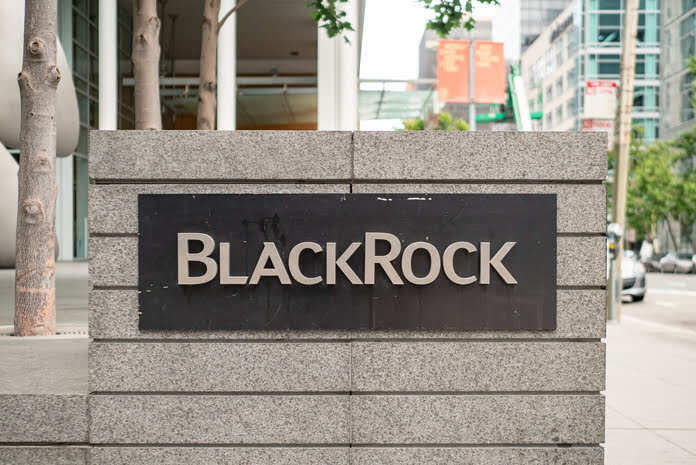BlackRock Bitcoin ETF: Catalyst for Crypto’s Mainstream Moment?

The BlackRock Bitcoin ETF (IBIT) has rapidly emerged as a transformative force in the financial world. Since its launch just 18 months ago, the iShares Bitcoin Trust (IBIT) has ballooned to over $75 billion in assets under management (AUM). This meteoric rise signals a powerful shift: crypto is no longer a fringe asset—it’s becoming a core component of institutional portfolios.
The BlackRock Bitcoin ETF now generates more annual fee revenue than its own flagship equity fund, iShares Core S&P 500 ETF (NYSEARCA:IVV), despite managing just a fraction of the assets. As the U.S. Securities and Exchange Commission (SEC) mulls the approval of BlackRock’s proposed in-kind redemption model, investors and analysts alike are watching closely. Could this change mark the final step toward full crypto mainstream adoption?
Demand Defies the Fee Structure
IBIT’s 0.25% management fee may seem high compared to traditional ETFs, but it hasn’t scared off investors. In fact, the BlackRock Bitcoin ETF has captured $52 billion of the $54 billion total inflows into U.S. spot Bitcoin ETFs to date. Its fee revenue—an estimated $187 million annually—has already outpaced the long-established IVV.
This speaks volumes: investors are willing to pay more for secure, regulated access to Bitcoin. BlackRock CEO Larry Fink’s characterization of Bitcoin as a “flight to quality” and a modern diversification asset only underscores this strategic repositioning.
In BlackRock’s latest Q2 report, analysts highlight Bitcoin’s growing role in diversifying portfolios in an age when traditional asset correlations—particularly between stocks and bonds—are breaking down. Bitcoin’s relatively low correlation with both equities and bonds makes it an increasingly attractive hedge in today’s volatile macro environment.
The SEC and the Future of In-Kind Redemptions
The SEC’s decision on whether to allow in-kind redemptions—where investors can exchange actual Bitcoin for ETF shares—is delayed until late 2025. The outcome could be a game-changer for the BlackRock Bitcoin ETF and the broader crypto investment landscape.
Currently, cash-based redemptions are standard for spot Bitcoin ETFs. But in-kind functionality could:
Lower operational costs for institutions
Enhance liquidity and scalability
Attract even more conservative capital, such as pension funds and endowments
Approval would send a strong message that regulators see Bitcoin not only as a viable asset but as a foundational building block for the next generation of investment products.
Portfolio Revolution: The 60/40 Model Under Pressure
For decades, the 60% equity/40% bond portfolio mix has ruled institutional investing. But IBIT’s performance—and Bitcoin’s inverse correlation with both major asset classes—suggests a shake-up is underway.
BlackRock’s internal data shows that adding 1–2% Bitcoin allocation to a 60/40 portfolio meaningfully boosts risk-adjusted returns. With the BlackRock Bitcoin ETF acting as the bridge between crypto and traditional finance, asset managers are starting to rethink allocation frameworks.
While IBIT’s $75 billion AUM is still small compared to BlackRock’s total ETF footprint, it represents a significant toehold—and a beachhead for crypto’s institutional conquest.
Key Takeaways for Investors
Watch the SEC: The late-2025 ruling on in-kind redemptions could unleash a wave of new inflows—or force a regulatory rethink.
Consider IBIT for Regulated Exposure: Investors wary of self-custody or unregulated exchanges can rely on the BlackRock Bitcoin ETF for credible crypto access.
Track Macro Trends: Economic slowdowns, central bank policy shifts, and geopolitical uncertainty all favor Bitcoin as a “crisis hedge,” reinforcing IBIT’s appeal.
Conclusion: Crypto’s Institutional Era Has Begun
The success of the BlackRock Bitcoin ETF marks a turning point in crypto’s evolution. It’s not just about price action anymore—it’s about legitimacy, scale, and integration into the financial mainstream. With the SEC’s decision looming and institutional interest accelerating, IBIT could become the blueprint for a new era in digital asset investing.
The message for investors is clear: crypto’s fringe days are over. Whether through fee-generating ETFs or core asset allocations, Bitcoin has entered the institutional conversation—and it’s here to stay.
Featured Image: Megapixl









